Workbench Wednesday – Ultimate Portable Workbench 4
With shop life resuming some vague semblance of normal after late winter and the presence of Li’l T on the scene, I’ve been able to return to working on the Ultimate Portable Workbench. I’ve now reached the stage where I need to layout the holes for the vise screws, and for the holdfasts as well. You see, I’ve decided that even though this is a portable workbench where low weight is among the highest goals, a set of holdfasts can be a much-valued addition. Hence, my exploration of wooden holdfasts. More about that next Wednesday.


For now my main objective was to locate the holdfast holes so that I could add some backing blocks to the insides of the top and bottom plywood skins. This started by just arbitrarily selecting the locations and marking out the centers of grid boxes and drilling 3/4″ holes.

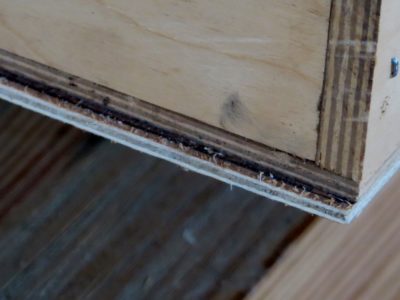
I then clamped the second skin to the underside of the half-constructed torsion box in order to simply use the holes in the first skin to drill the holes in the second skin.
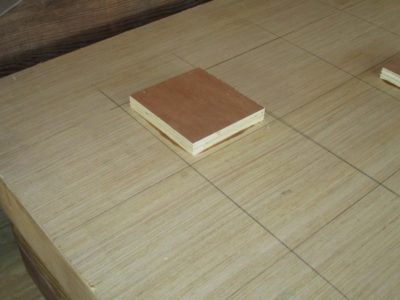
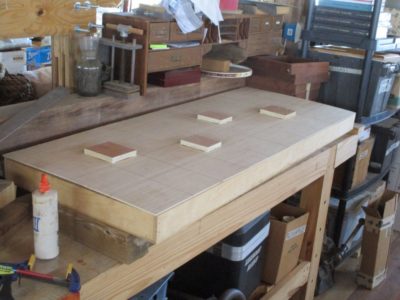
With that step accomplished I marked the grid pattern on the underside of the second skin so I knew where to put the backing blocks. Once again I used T3 adhesive, in part because I had a lot on hand and because I could not always be sure of the environment for the bench.


Once the blocks were secured I just used the holes in the skin to guide the drilling of the holes through the block. This process allowed me to get perfectly aligned upper and lower collars in place so that holdfasts could be used in this feather weight bench.
Once that was finished I set the second skin aside and moved on to the threaded holes for the vises. I had already glued backing blocks in those locations.
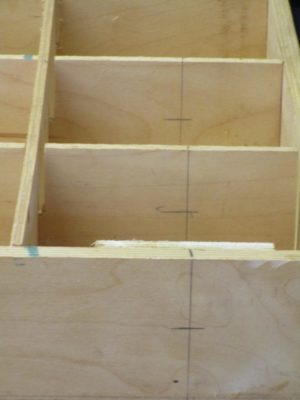
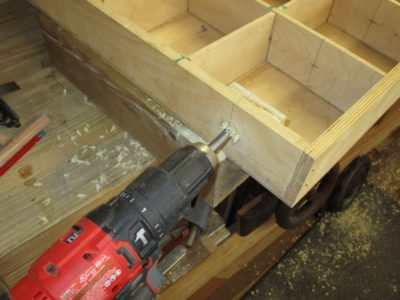

I drilled the holes through the apron and the grid using a combination of drill bits to accomplish the desired ends. The hole in the apron was 7/8″, in the grid web the holes were 1″ to accommodate the 1″ vise screws.

Fortunately I have a set of extra large taps and dies, rescued from the trash eons ago, so making the matching threaded openings was a snap.
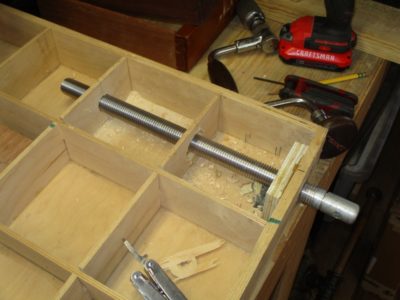


Join the Conversation!